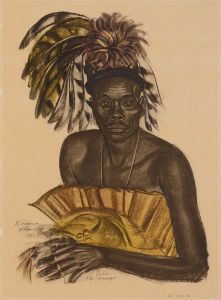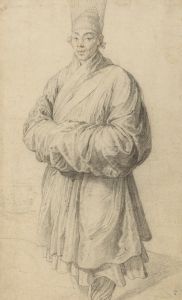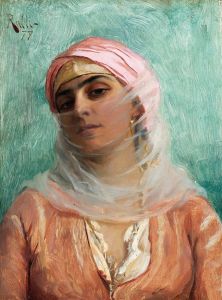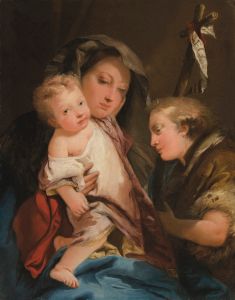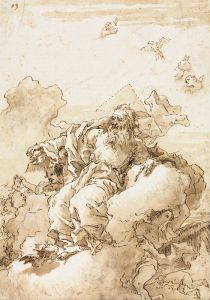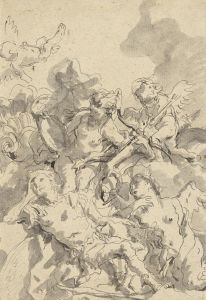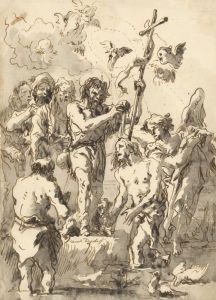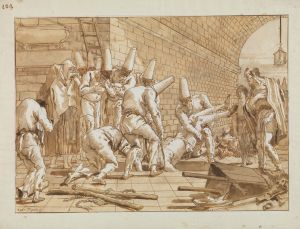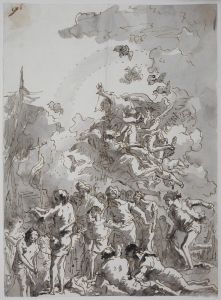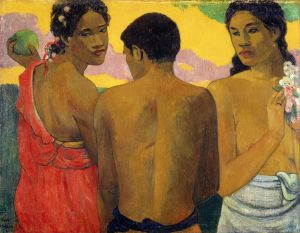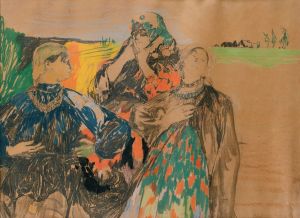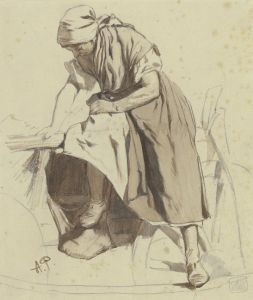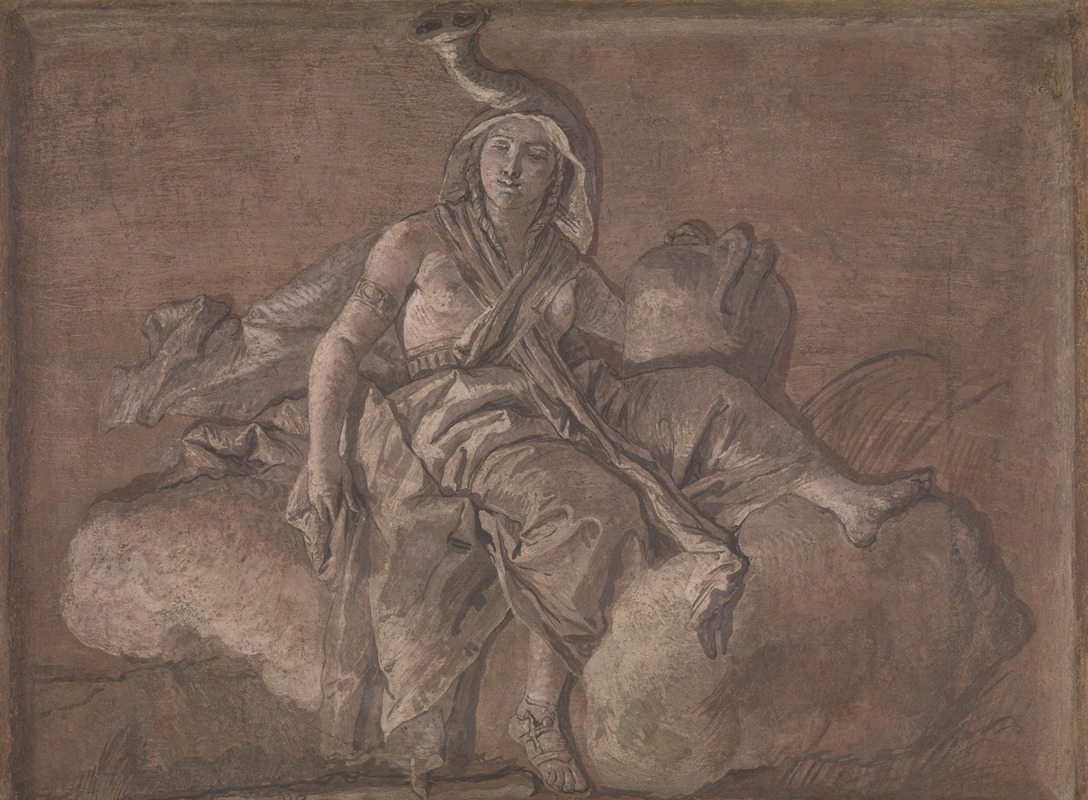
Allegorical Figure Representing Africa
A hand-painted replica of Giovanni Domenico Tiepolo’s masterpiece Allegorical Figure Representing Africa, meticulously crafted by professional artists to capture the true essence of the original. Each piece is created with museum-quality canvas and rare mineral pigments, carefully painted by experienced artists with delicate brushstrokes and rich, layered colors to perfectly recreate the texture of the original artwork. Unlike machine-printed reproductions, this hand-painted version brings the painting to life, infused with the artist’s emotions and skill in every stroke. Whether for personal collection or home decoration, it instantly elevates the artistic atmosphere of any space.
"Allegorical Figure Representing Africa" is a painting by the Italian artist Giovanni Domenico Tiepolo, who was an important figure in the Venetian art scene during the 18th century. Giovanni Domenico Tiepolo, often referred to as Giandomenico, was the son of the renowned painter Giovanni Battista Tiepolo. He was born on August 30, 1727, in Venice and died on March 3, 1804, in the same city. Giandomenico was known for his frescoes, drawings, and paintings, often characterized by their lively compositions and vibrant colors.
The painting "Allegorical Figure Representing Africa" is part of a series of works that depict the four continents as allegorical figures, a common theme in European art during the Baroque and Rococo periods. These allegorical representations were intended to symbolize the continents through personification, often incorporating elements that were thought to be characteristic of each region.
In "Allegorical Figure Representing Africa," Giandomenico Tiepolo portrays Africa as a regal and exotic figure. The figure is typically depicted with dark skin, adorned in rich and colorful garments that suggest a sense of nobility and grandeur. The attire and accessories often include elements that were stereotypically associated with Africa during the 18th century, such as animal skins, feathers, and sometimes even exotic animals like lions or elephants.
The painting is notable for its detailed and expressive style, which reflects Giandomenico's skill in capturing both the physical beauty and the symbolic significance of the subject. The use of light and shadow, as well as the vibrant color palette, are characteristic of Tiepolo's work and contribute to the overall impact of the painting.
Giandomenico Tiepolo's approach to allegorical figures was influenced by his father's work, but he also brought his own unique perspective and style to his paintings. His ability to blend realism with allegory made his works particularly engaging and visually appealing.
The "Allegorical Figure Representing Africa" is part of a larger collection of works that were often commissioned for decorative purposes in palaces and grand homes. These paintings were intended to convey the wealth, knowledge, and cultural sophistication of the patrons who commissioned them. They also reflect the European fascination with and often romanticized view of other continents during the 18th century.
While the exact date of the painting is not always specified, it is generally believed to have been created during the latter half of the 18th century, a period when Giandomenico was actively producing some of his most significant works.
Today, "Allegorical Figure Representing Africa" is appreciated not only for its artistic merit but also for its historical significance. It provides insight into the ways in which 18th-century Europeans viewed and represented other cultures, and it remains a valuable piece for understanding the broader context of art and society during that time.
The painting is housed in various collections and museums, where it continues to be studied and admired by art historians and enthusiasts alike. Giandomenico Tiepolo's legacy as an artist is preserved through works like this, which continue to captivate audiences with their beauty and complexity.





